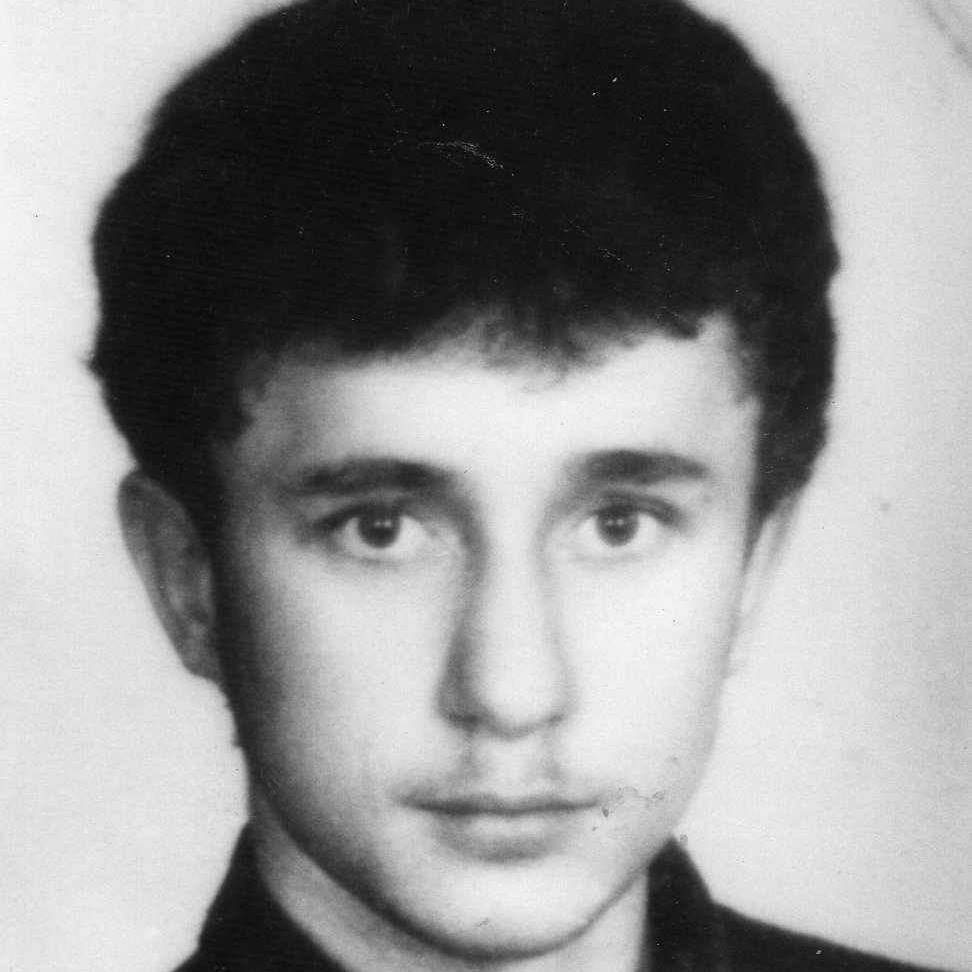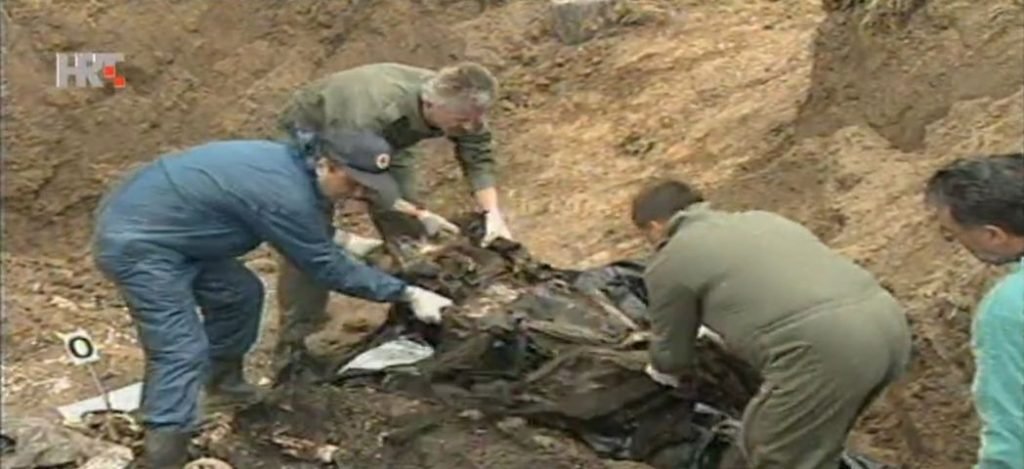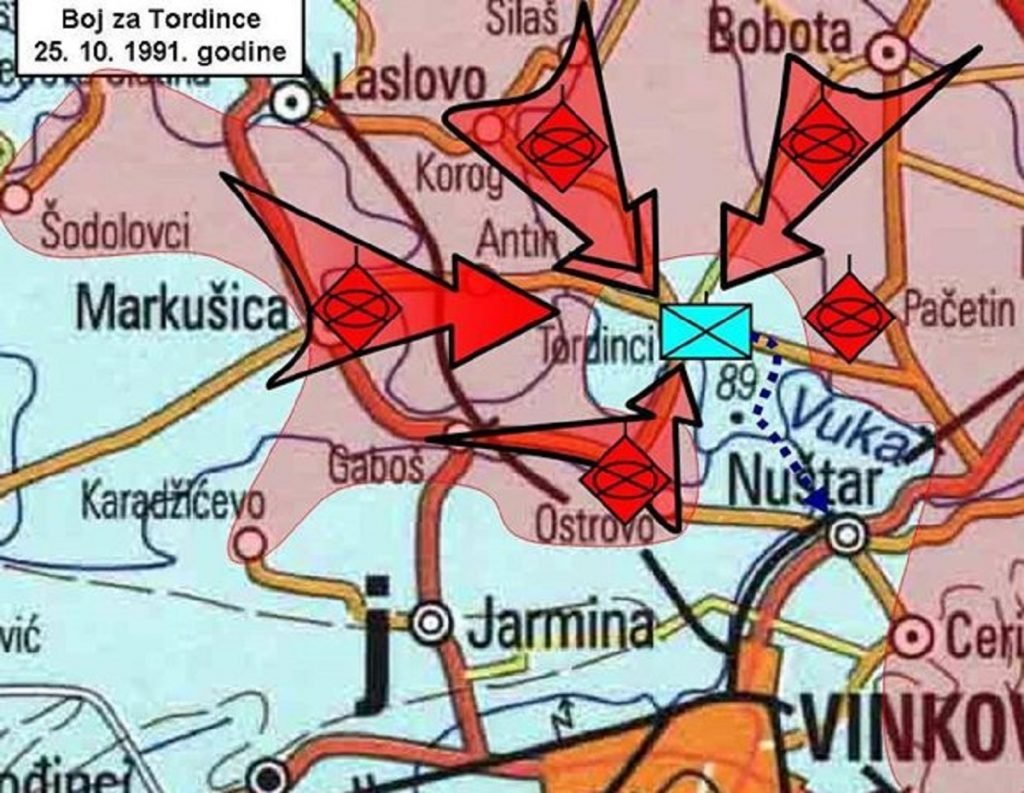The Battle of Tordinci took place on 25 October 1991. This village near the town of Vinkovci had been surrounded and under attack for almost one month but still managed to fend off enemy forces.

A ferocious attack was launched from the surrounding Serb villages of Velika Mlaka, Silaš, Pačetin and Ostrovo. Croatian defenders were prepared and destroyed nine tanks and disabled an armoured combat vehicle while inflicting approximately 170 casualties among the enemy troops. However, Croatian defenders withdrew due to a lack of anti-tank weapons that afternoon.
There were many wounded on the Croatian side as well and a total of 30 civilians and 10 veterans were killed. Only two of those died in hospital as a result of severe injuries and were buried in Vinkovci. Following exhumations of bodies from primary and secondary graves at various locations, 35 civilians and soldiers were reburied although the fates of defenders Vlatko Matanović from Antin, Vladimir Doležak from Vinkovci and Boris Gubić from Zagreb are still unknown.

In addition to killing civilians, 11 non-Serbs were mentally and physically abused and then transferred to the Begejci Camp in Serbia. Jarmina was attacked and successfully defended the same day while Nuštar came under fire that afternoon from the direction of Mirkovci, Cerić and Henrikovci. That attack was repelled by Croatian defenders who destroyed three Yugoslav People’s Army (YPA) tanks.
During the war, it was reported that 208 victims were buried in a mass grave in front of the church in Tordinci. This information published in the Večernji list daily in May 1992 was subsequently used for propaganda purposes and certain media continue to spread incorrect information. In particular, about 170 Chetniks Serb irregular forces, YPA regular army soldiers and reservists as well as other rebel Serbs were killed during the Battle of Tordinci. Following its occupations, the YPA cleared the terrain around the village, collected all the dead and placed them in front of the local Catholic church. After identification of the bodies was completed, the YPA removed its dead to Serbia while local rebel Serbs were buried in surrounding Serb villages.

Based upon a witness who was a registrar in Tordinci and who managed to reach the free territory of the Republic of Croatia only in May 1992, a total of 29 Croatian soldiers and civilians killed in the fighting were collected during the clean-up of the surrounding terrain and included among the enemy totals which then rose to 208.
Based on survivors’ testimonies, a judge of the Vukovar County Court issued an order in May 1999 to exhume all remains in Tordinci. Only five bodies were exhumed and subsequently identified at the parish office of the demolished church and bones of animal origin were also found in the grave. The Government Office for Detainees and Missing Persons continued excavations in 2004 and several dozen more remains were found in numerous mass and single graves near Tordinci.
Magistar sam povijesti. Radno iskustvo stjecao sam u Hrvatskom povijesnom muzeju i na Hrvatskoj radioteleviziji u emisiji TV Kalendar. Autor sam nekoliko knjiga i filmova na temu Domovinskog rata. Osnovao sam i uređujem Facebook stranicu Dogodilo se na današnji dan – Domovinski rat i portal Domovinskirat.hr. Također uređujem i vodim emisiju Domoljubne minute koja se svakog dana emitira na Hrvatskom katoličkom radiju te emisiju Sve za Hrvatsku i Novi valovi dobrote. Vlasnik sam obrta CroHis kojim promičem vrijednosti Domovinskog rata.

